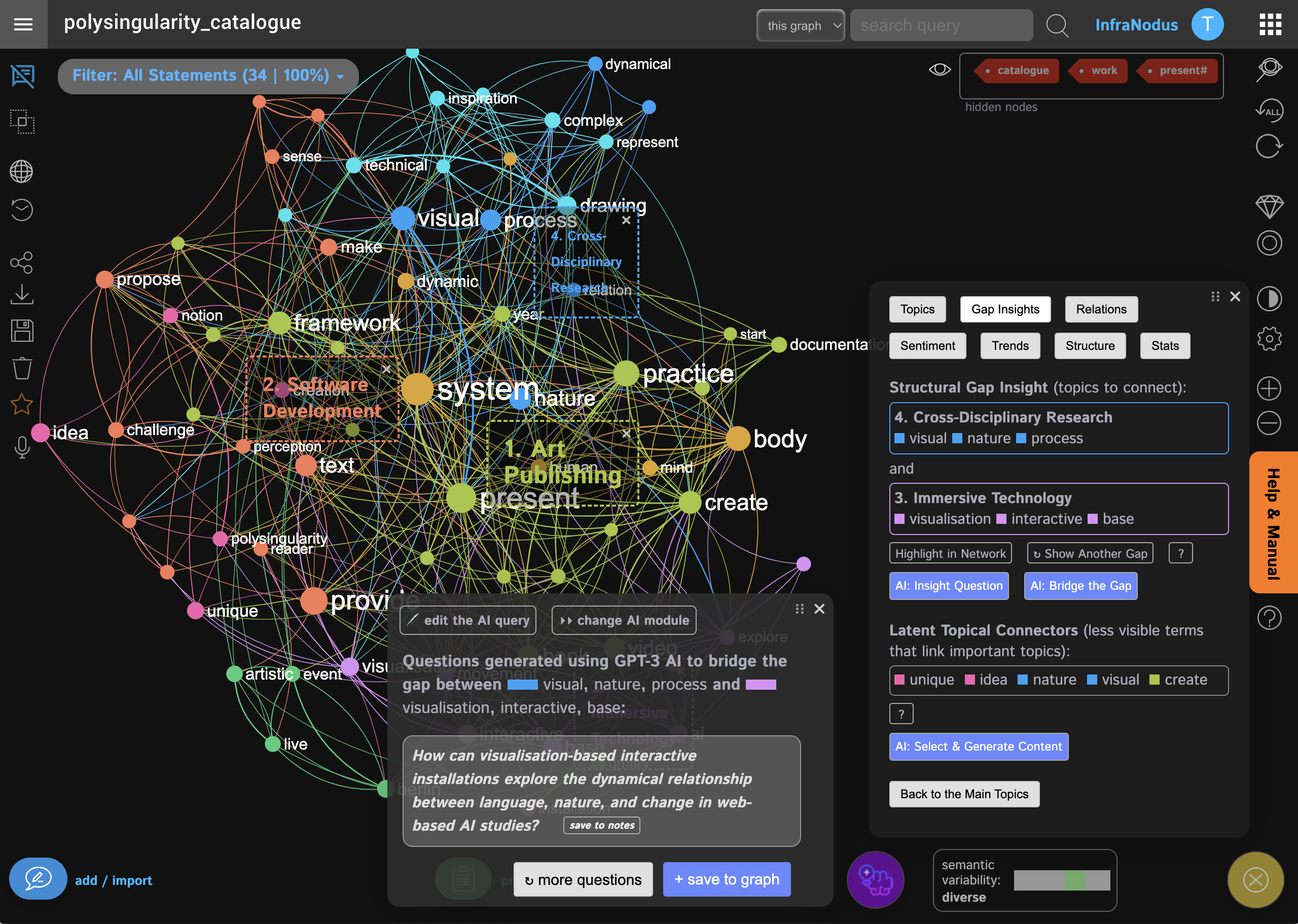InfraNodus: Cognitive Variability AI
InfraNodus is a methodology for generating insight using rhizomatic thinking. It is based on representing ideas as a network and using graph theory to detect the most common patterns and the gaps between them. It is available online at https://infranodus.com and is used by thousands of researchers and thinkers worldwide.
In 2021, Oleg Yarin joined the InfraNodus team to build a new, robust backend and develop the user experience. In 2022, we released a new version of InfraNodus that included an API, allowing other applications to have access to insights that are provided by InfraNodus.
Also, in 2022, we fully integrated InfraNodus with the latest GPT-3 natural language AI model (the same one that powers ChatGPT) in order to help our users leverage the latest AI technology and use it to query their knowledge graphs.
Our approach was based on promoting ecological thinking and cognitive variability using network thinking and AI. Building upon the structural gaps and thinking recommender system introduced in InfraNodus during 2019-2020, we added AI capabilities to make it easier for users to bridge disjointed ideas together.
We also introduced a cognitive variability sensor in InfraNodus, which takes the idea of structural gaps further. Specifically, if the ideas are too disconnected, it will recommend the user to connect them to make the discourse more coherent and interconnected. However, if the ideas are too closely connected (endangering the mind-viral immunity), then InfraNodus will recommend the user to disconnect some ideas or to explore the periphery.
All this is done both using the visual representation — the concept network graph of ideas — as well as the built-in GPT-3 AI that produces research questions that encourage the user to better connect / disrupt the structure of their ideas.
Currently, this system is implemented in InfraNodus and is used by multiple researchers, thinkers, and consultants who help us develop it further and improve its practical applications.
Date
April 1, 2022
Year
2022-present
Collaborators
Oleg Yarin
Category
Active, Digital, Discourse, Enterprise, Featured, Framework, In Progress, Medium, Methodology, Practice, Social, System, Tool, Type, Urgency, Visual

